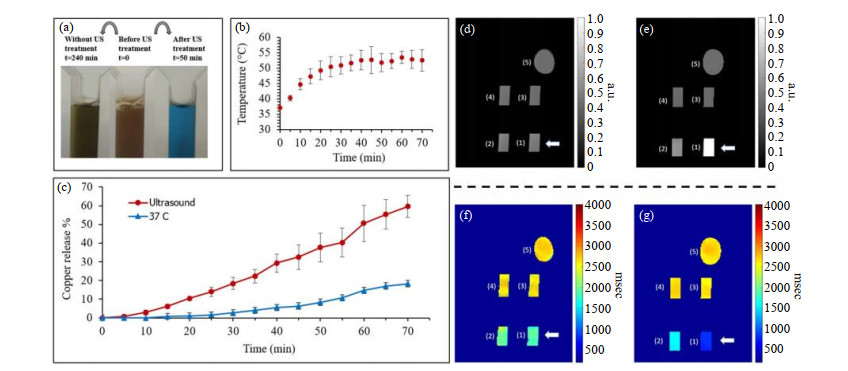图2. 超声加热(US)对胶束纳米载体中铜释放的影响和MRI检测.(a)三个装有PEI胶束的比色皿的照片:(左)在室温下4 h后,未经US处理;(中)基线解决方案(初始状态);(右)经过50 min的US处理.(b) US处理引起的温度升高.(c)经过US处理和未经US处理溶液的所得铜释放百分比与时间的关系(n=3).(d, f)未经US处理和(e, g) US处理后的(d, e) MRI T1加权和(f, g) T1伪彩图像[
Fig.2. Influence of ultrasound heating on copper release from micelle nanocarriers and MRI detection. (a) Photos of three cuvettes containing loaded micelles with PEI: (Left) After 4 h at room temperature without US treatment; (Middle) Baseline solution (initial state); (Right) After US treatment for 50 min. (b) The temperature elevation resulting from the US. (c) The resulting copper release percentages as a function of time (n=3) for both US treated and untreated solutions. Note the substantial effect of the (d, e) MRI T1 weighted and (f, g) T1 mapping images of cuvettes (d, f) before and (e, g) after US treatment[

